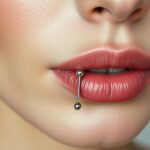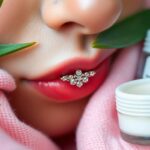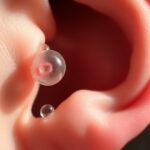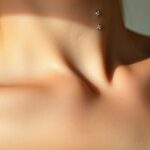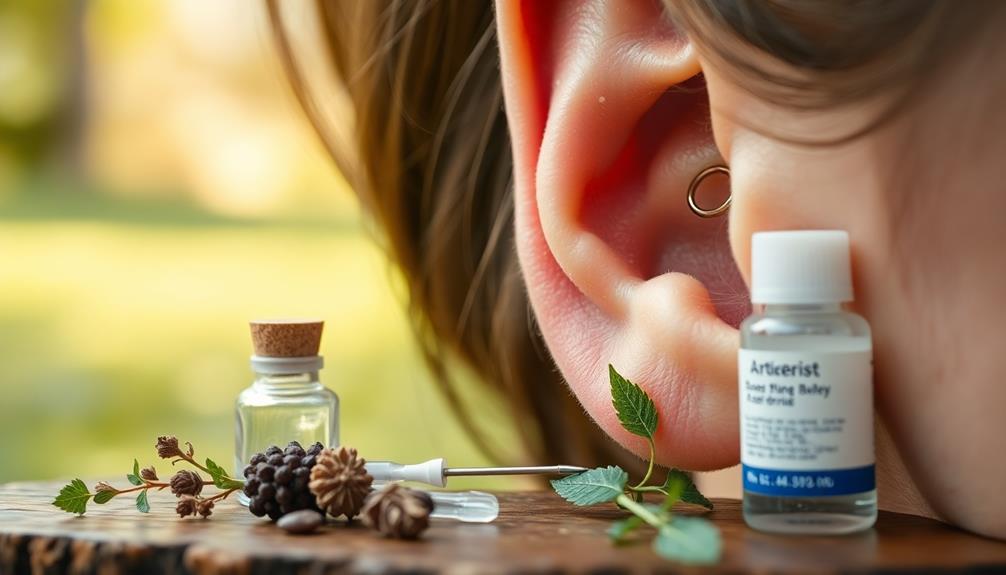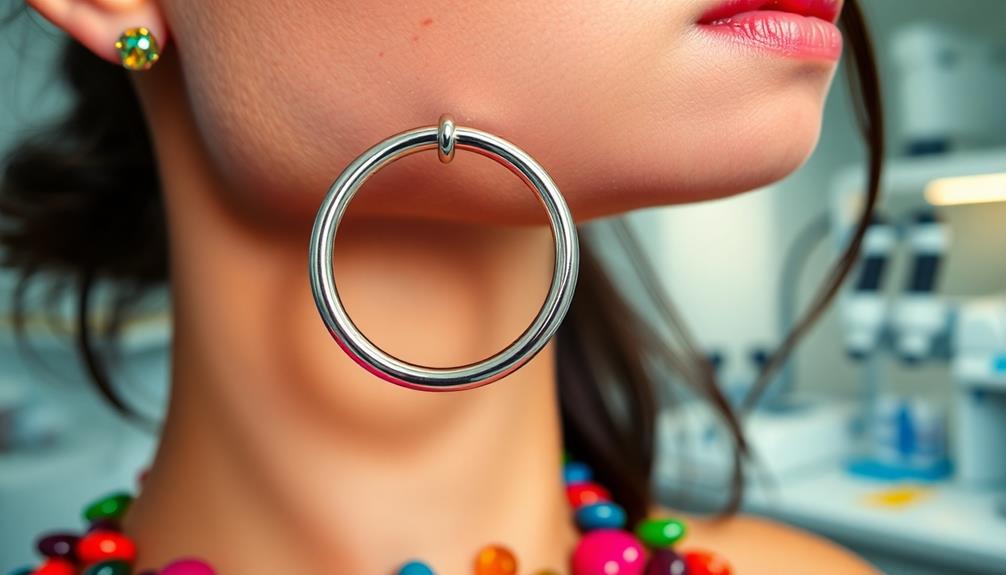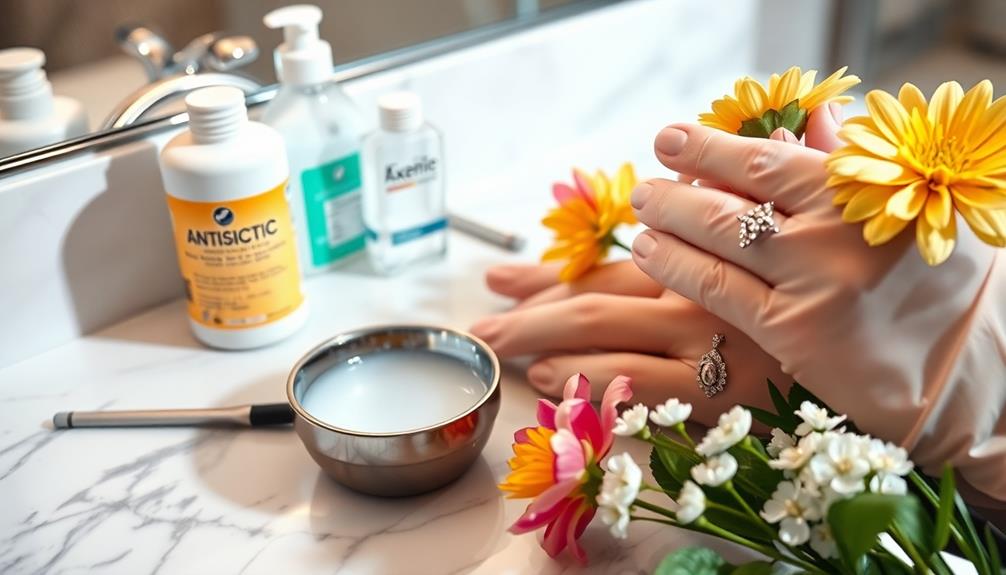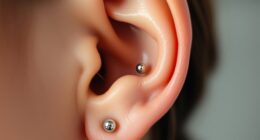After getting a new piercing, you can expect a healing process that lasts from a few months up to a year. Initially, you might experience swelling, tenderness, and some fluid drainage. Over time, symptoms should improve, but you must regularly clean and care for your piercing to avoid complications. Watch for signs of infection, like increasing redness or unusual discharge. Proper aftercare is essential, including using a saline solution and keeping your hands clean. As you navigate this journey, there are many tips and insights that can help streamline your healing experience.
Key Takeaways
- The healing process includes four phases: hemostasis, inflammation, proliferation, and remodeling, taking 6-12 months for complete healing.
- Initial symptoms such as bleeding, swelling, and whitish-yellow fluid drainage are normal during the first few weeks.
- Proper aftercare, including regular cleaning with saline solution, is crucial to prevent infections and complications.
- Monitor for signs of infection, including increased redness, swelling, or unusual discharge, and consult a professional if needed.
- Avoid touching or twisting the jewelry to maintain the integrity of the healing process and prevent complications.
Understanding the Healing Timeline
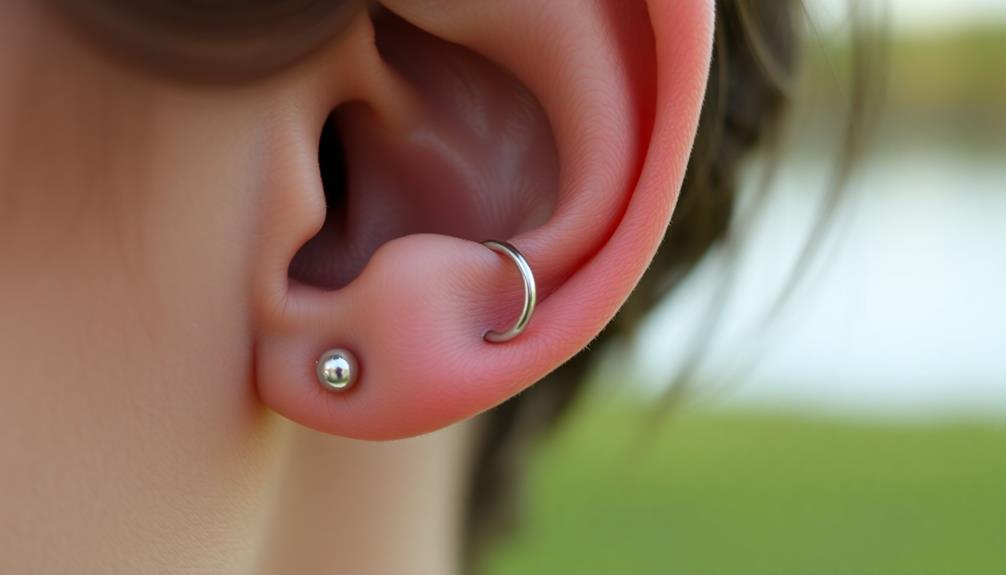
Understanding the healing timeline for a new piercing is essential, as it helps you manage expectations during this process. The healing process generally unfolds in several phases: hemostasis, inflammation, proliferation, and remodeling.
For most piercings, the initial healing time takes about three months to reach the halfway mark. During this period, you might notice some swelling and discharge, which is usually clear or yellow fluid.
It's vital to monitor these symptoms closely, as they can sometimes be mistaken for signs of infection. Full healing, however, can take anywhere from six to twelve months, depending on factors such as the type of body jewelry, your age, health, and aftercare practices.
As you progress through the healing process, watch for signs that your piercing is healing properly. These include a reduction in swelling, the cessation of discharge, and an overall improvement in appearance.
Regular professional assessments can help confirm when your piercings are fully healed, ensuring you avoid complications. Remember, patience is key during this time; every person's experience will vary, so take care to follow your aftercare instructions diligently.
Initial Symptoms After Piercing
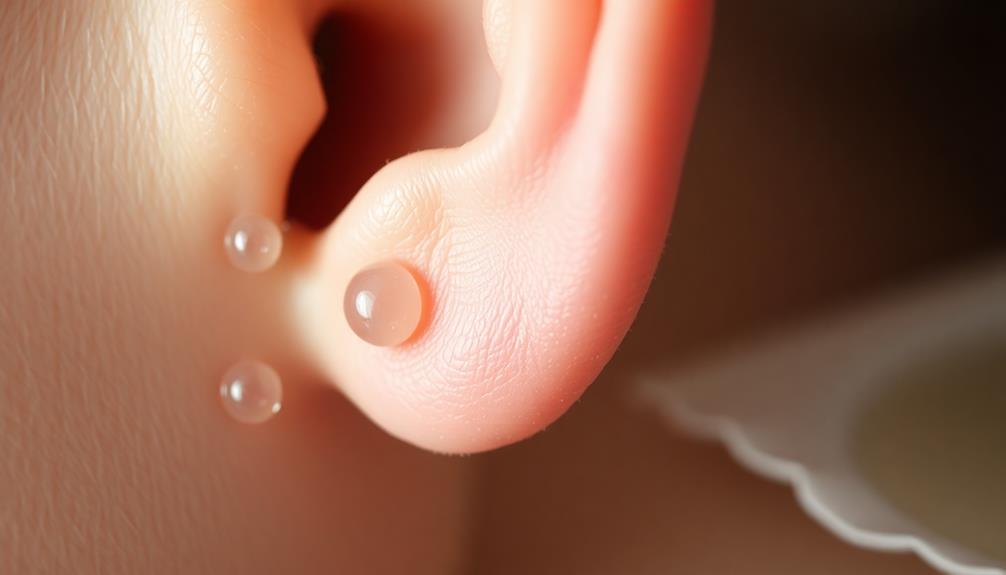
After getting a new piercing, you might experience a range of initial symptoms that signal your body's natural healing response.
Initially, you can expect some bleeding and initial swelling around the piercing site. This swelling usually subsides within a few days, but tenderness and bruising may linger for several weeks as your body works to heal.
During this healing phase, it's normal for a whitish-yellow fluid to drain from the piercing site. This fluid is part of your body's healing response, and while it may seem concerning, it typically indicates your body is managing the wound.
You may also notice discoloration and redness around the area. Don't worry; these symptoms should gradually improve as healing progresses.
While some soreness is expected, you should pay attention to your body. If the soreness stops but you experience persistent or severe pain, unusual discharge, or increased redness, this may indicate an infection.
In such cases, it's essential to seek evaluation from a professional to guarantee proper care. Remember, listening to your body's signals is key during this initial healing stage.
Importance of Aftercare
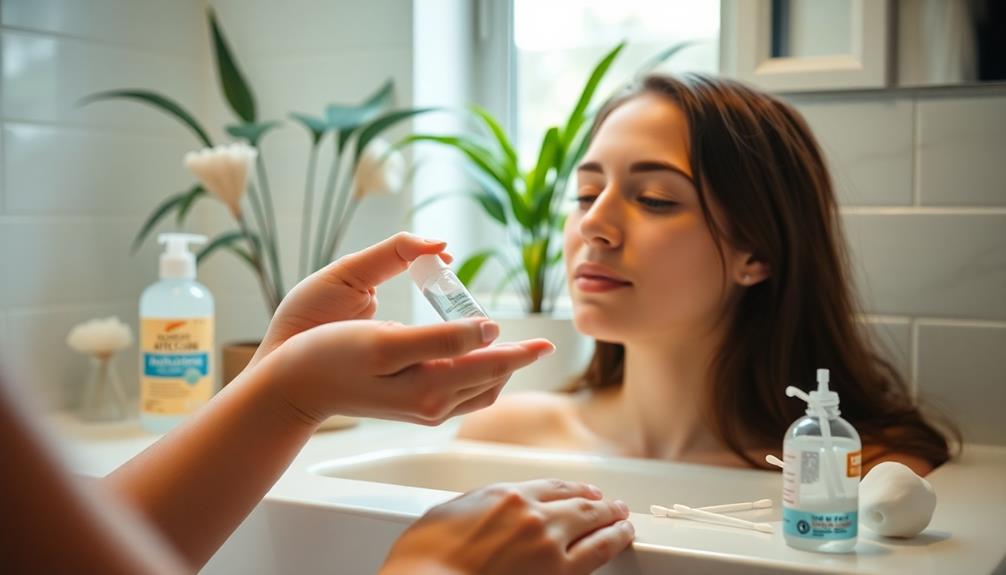
Aftercare is essential to guarantee your piercing heals properly and stays infection-free.
By following essential cleaning practices and monitoring your healing progress, you can greatly reduce the risk of complications.
Staying proactive during this phase is key to a successful healing journey.
Essential Cleaning Practices
Your new piercing deserves proper attention to guarantee it heals well and stays infection-free. Crucial cleaning practices play an essential role in ensuring a smooth healing process.
Here are some key steps to follow:
- Always wash your hands before touching or cleaning your new piercing.
- Clean the area twice daily using a sterile saline solution or mild soap.
- Rinse thoroughly to remove any residue, then pat dry with clean gauze or cotton pads.
- Avoid harsh chemicals, alcohol, or anything that can irritate the piercing.
- Refrain from twisting or moving the jewelry during the healing period.
Monitoring Healing Progress
Monitoring the healing progress of your new piercing is essential for ensuring it stays healthy and free from complications. Proper aftercare plays a vital role in this process. Regular cleaning with a saline solution or mild soap helps remove build-up and reduces the risk of infection.
Keep an eye on symptoms such as persistent redness, swelling, or unusual discharge, as these may indicate potential issues requiring professional attention. Avoid touching or twisting the jewelry, as this can disrupt the healing process and lead to complications. Check in with your piercer for regular assessments to address any concerns promptly.
Here's a quick reference table for monitoring symptoms:
| Symptoms | Possible Issues | Action Required |
|---|---|---|
| Persistent redness | Infection | Contact a professional |
| Swelling | Irritation or infection | Clean thoroughly, consult piercer |
| Unusual discharge | Infection | Seek professional advice |
| Pain or discomfort | Complications | Schedule a check-up |
Common Healing Complications
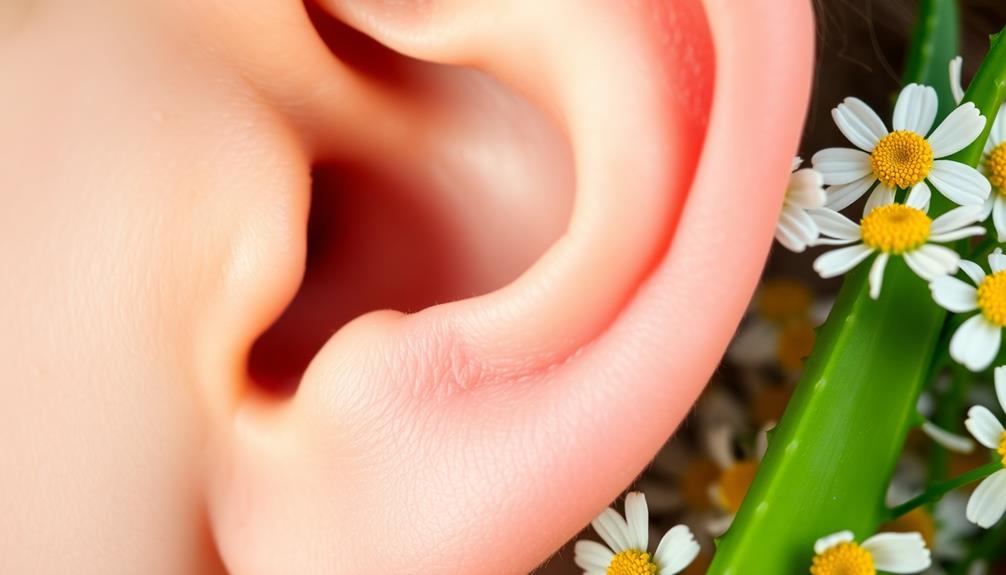
Even a small percentage of people experience common healing complications after getting a new piercing. While most people heal without issues, being aware of potential problems can help you take proactive steps.
Here are some complications you might encounter: It's crucial to maintain a clean environment around your piercing, similar to how hydrocolloid technology promotes healing in acne treatment. This can prevent issues like infections and promote faster healing.
- Infection: Watch for increased redness, swelling, pain, or pus-like discharge, which may require medical attention.
- Keloids: Raised scars from excessive collagen production, especially common in younger individuals and certain body areas.
- Allergic reactions: Jewelry containing nickel can cause irritation and delayed healing, so consider switching to hypoallergenic materials like surgical stainless steel or titanium.
- Delayed healing: Factors such as stress, poor nutrition, and inadequate aftercare can prolong recovery, increasing the risk of complications.
- Piercing migration: If you don't care for your piercing properly, the jewelry may shift from its original placement, complicating healing and possibly requiring re-piercing.
Tips for Effective Cleaning
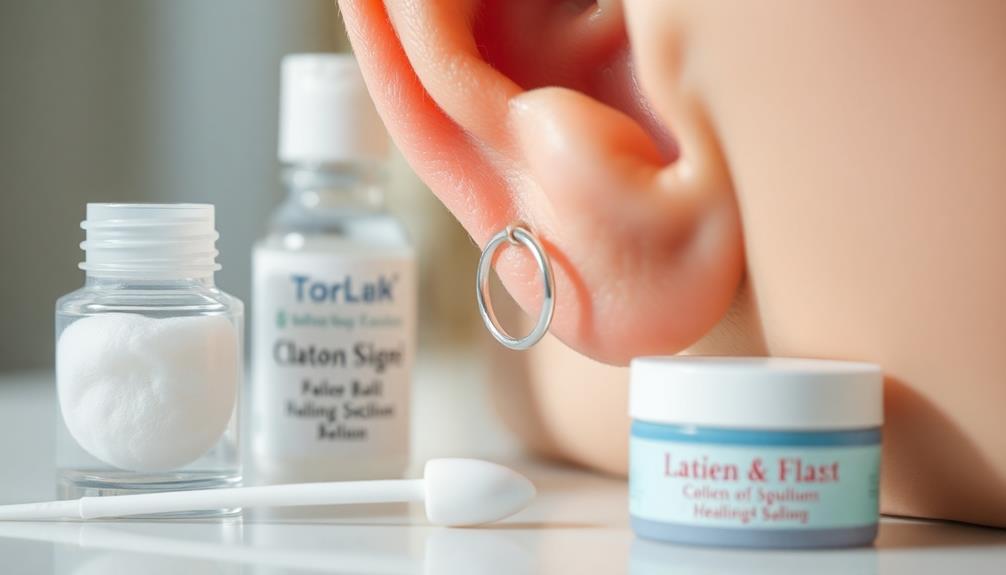
Taking care of your new piercing is essential to promote healing and prevent complications. Proper cleaning will help reduce the risk of infection and guarantee a smooth healing process. Here are some effective tips to keep in mind:
| Cleaning Tips | What to Avoid |
|---|---|
| Always wash your hands thoroughly before touching the area around your piercing. | Avoid using cotton swabs, which can irritate the piercing. |
| Use a sterile saline solution to spray the piercing twice daily for thorough coverage. | Avoid using alcohol or hydrogen peroxide, as they can damage healing tissue. |
| Pat the area dry with clean gauze or cotton pads after cleaning to prevent moisture buildup. | Avoid touching your piercing with dirty hands or unclean items. |
| Rinse the piercing after showering to remove soap residue and maintain cleanliness. | Avoid using harsh soaps that can irritate the skin. |
Special Considerations for Oral Piercings
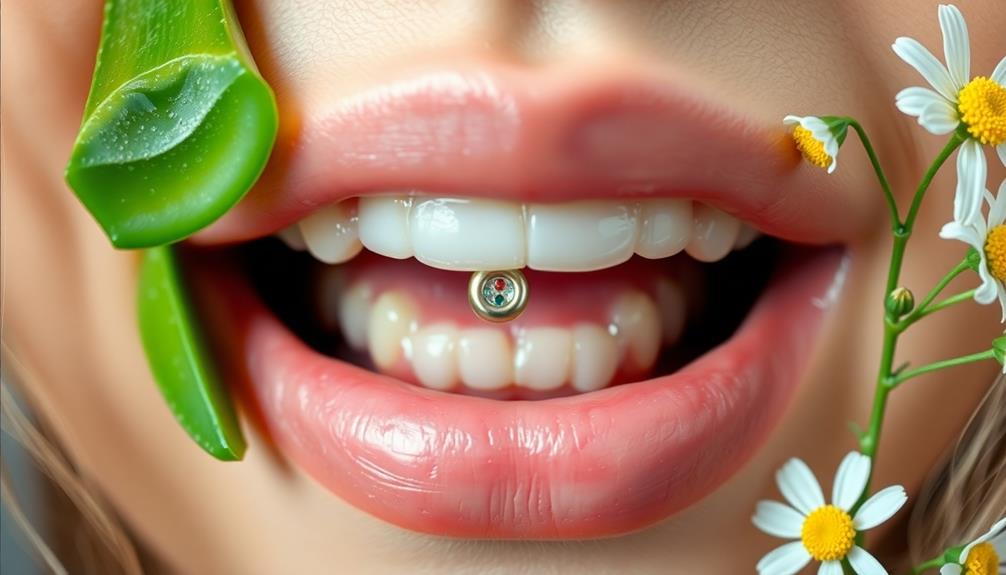
Caring for your oral piercing is essential for a smooth healing process.
You'll need to rinse with an alcohol-free mouthwash or a saltwater solution after meals to keep bacteria at bay.
Plus, it's important to watch for any signs of complications, like increased pain or unusual discharge, so you can address issues quickly.
Rinsing Techniques Post-Piercing
After getting an oral piercing, proper rinsing techniques are essential for a smooth healing process.
You'll want to focus on minimizing bacteria while maintaining good oral hygiene. Here are some key tips to follow:
- Use an alcohol-free antimicrobial mouthwash 3-4 times daily after meals to reduce bacteria.
- Prepare a saltwater solution by mixing 1/4 teaspoon of non-iodized salt with 8 ounces of warm water for additional cleansing benefits.
- Swish the saltwater solution gently in your mouth the same number of times to avoid disturbing your piercing.
- Limit mouthwash use to 4-5 times daily to prevent irritation from strong ingredients that might disrupt the healing process.
- Always rinse your mouth gently to protect the healing tissue from unnecessary trauma.
Following these rinsing techniques will help you promote infection prevention and support your healing process.
Signs of Complications
While many people enjoy the aesthetic of oral piercings, it's vital to be aware of the signs of complications that can arise during the healing process. One common issue is increased pain and swelling. If you notice prolonged swelling or difficulty eating or speaking, it could indicate a problem.
Be vigilant for signs of infection, such as persistent redness, increased pain, pus, or a foul odor. These symptoms necessitate immediate medical consultation.
Excessive movement or twisting of your oral jewelry can exacerbate irritation and delay the healing process, leading to complications like migration or embedding. To minimize these risks, avoid any oral contact with the piercing and refrain from using tobacco products, as they can introduce bacteria and heighten the risk of infection.
Maintaining proper oral hygiene is essential during the healing phase. Regularly rinsing with an alcohol-free antimicrobial mouthwash or a saltwater solution can help keep your mouth clean and reduce the likelihood of complications.
Dietary and Lifestyle Factors

During the healing process of a new piercing, your diet and lifestyle choices play an essential role in how effectively your body recovers. To support your healing, consider these key factors:
– Eat a balanced diet rich in vitamins and minerals, especially Vitamin C and Zinc, to boost healing. Proper nutrition can also enhance your skin's resilience against potential irritation or infection, making it important during this period.
For more on this, check out piercing care and hygiene.
- Stay hydrated! Proper hydration aids tissue regeneration and enhances overall health.
- Prioritize rest and adequate sleep; this allows your body to repair itself and reduces stress that could hinder healing.
- Engage in moderate exercise, but steer clear of high-impact activities that could traumatize the piercing site.
- Maintain a low-stress lifestyle to support your immune system, essential for preventing complications during recovery.
Emotional and Physical Well-being

When you get a new piercing, it's not just your body that needs care; your emotional and physical well-being are equally important for a smooth healing process.
To support your healing, focus on maintaining a balanced diet and staying hydrated. These practices enhance your body's recovery and overall function.
Adequate rest is essential, too. A well-rested body heals more effectively from the trauma of a new piercing, while minimizing stress can further aid your recovery.
Keeping your environment clean, like changing your bedding and towels regularly, also reduces the risk of contamination and infection during this time.
Emotionally, it's natural to experience feelings of regret or anxiety after getting a piercing. If these feelings arise, seek support from friends or communities that understand your experience.
Engaging in self-care practices, such as gentle exercise and mindfulness, can greatly improve your emotional well-being and help you stay grounded.
Prioritizing both your physical and emotional health will make the healing process smoother, allowing you to enjoy your new piercing with confidence.
Resources for Further Guidance
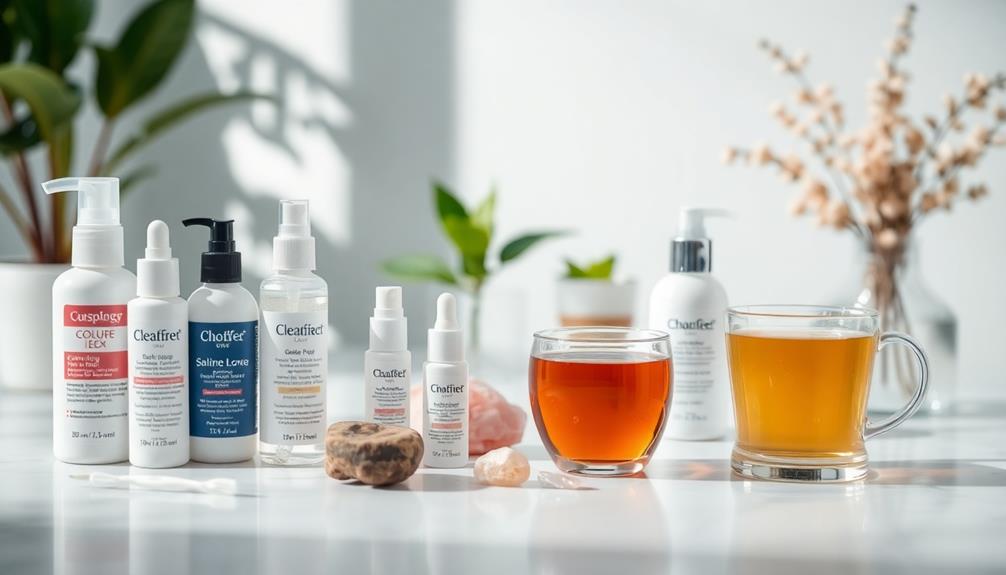
To guarantee a smooth healing process after your new piercing, accessing reliable resources can be incredibly beneficial.
Having the right information at your fingertips can greatly impact your aftercare routine and overall healing experience.
Here are some valuable resources to take into account:
- Aftercare guides available in English and Spanish to help you follow detailed instructions for your new piercing.
- Educational articles from reputable health organizations that outline best practices for body piercing and Piercing Aftercare.
- Health publications from Mayo Clinic Press covering topics related to piercing safety and aftercare.
- Community support initiatives that provide additional insights and shared experiences from others traversing the healing process.
- The Association of Professional Piercers and the International Journal offer research and guidelines for safe and effective aftercare.
Frequently Asked Questions
What Are the Stages of a Piercing Healing Process?
The healing process of a piercing involves four stages: hemostasis, inflammation, proliferation, and remodeling. Each phase varies in duration and symptoms, and you'll notice changes as your body repairs the tissue around the piercing.
How Do You Know if a Piercing Is Healing Right?
You'll know your piercing's healing right if swelling, tenderness, and discharge decrease over time. Watch for signs like reduced redness and itching. If symptoms worsen, consult a professional to guarantee everything's on track.
What to Expect After Getting Your First Piercing?
After getting your first piercing, you can expect slight bleeding, swelling, and tenderness. These symptoms usually fade within days. Remember to clean it regularly and be patient, as healing can take several weeks.
What Are the Steps in Healing a Piercing?
To heal your piercing, follow these steps: clean it regularly, avoid touching, watch for signs of infection, and be patient. Your body needs time to recover, so give it the care it deserves.
Conclusion
As you navigate the healing journey of your new piercing, think of it as tending to a budding flower. With attentive care and patience, you'll watch it flourish. Remember, the right aftercare can help you avoid complications and promote a smooth recovery. Stay mindful of your body's signals and make adjustments as needed. Embrace this process, and soon you'll not only have a beautiful piercing but also a deeper understanding of self-care and well-being.
Hi, my name is Danielle, and I’m an author for piercings-body.com. I have a passion for writing and love to share my knowledge on all things body piercing-related. I’m also a huge advocate for safe body modification practices and believe everyone should be able to make informed decisions about their bodies. When I’m not writing or blogging, I enjoy spending time with my family and friends, practicing yoga, and exploring new places.



